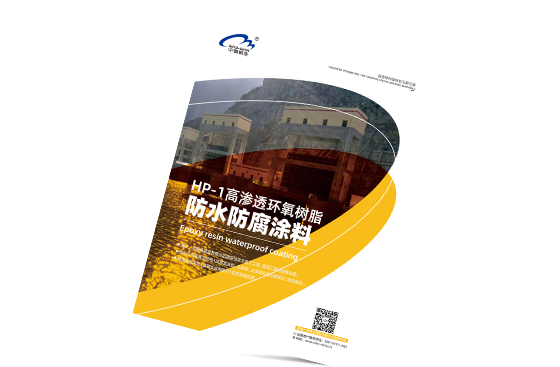Exploring Innovative Designs with Ultra High Performance Concrete: Revolutionizing the Construction Industry
Release Time:
2024-11-09 09:00
Innovative Designs with Ultra High Performance Concrete
Table of Contents
1. Introduction to Ultra High Performance Concrete (UHPC)
2. Key Properties of UHPC That Enhance Design
3. Applications of UHPC in Modern Architecture
3.1 Bridges and Structural Elements
3.2 Facades and Aesthetic Features
3.3 Pavements and Urban Infrastructure
4. Innovative Techniques in UHPC Design
4.1 3D Printing with UHPC
4.2 Lightweight UHPC Composites
5. Case Studies: Successful Implementations of UHPC
6. Environmental Benefits of Using UHPC
7. Challenges and Considerations in UHPC Use
8. The Future of UHPC in Construction
9. Frequently Asked Questions (FAQs)
10. Conclusion
1. Introduction to Ultra High Performance Concrete (UHPC)
Ultra High Performance Concrete (UHPC) represents a significant advancement in concrete technology, engineered to deliver exceptional mechanical and durability properties. With compressive strengths often exceeding 150 MPa, UHPC is a composite material that integrates high-quality aggregates, cement, water, and specific additives. This unique composition not only enhances its structural performance but also opens up new avenues for architectural design.
Architects and engineers are increasingly turning to UHPC due to its remarkable versatility and aesthetic potential. The material allows for the creation of intricate shapes, thin-walled structures, and complex geometries that were previously impractical with conventional concrete mixtures. As a result, UHPC is transforming the landscape of modern construction, enabling innovative designs that reflect contemporary architectural trends.
2. Key Properties of UHPC That Enhance Design
Understanding the properties of UHPC is crucial for architects and builders looking to leverage its advantages effectively. Here are some key characteristics:
2.1 High Compressive Strength
UHPC's superior compressive strength allows for thinner structural elements while maintaining load-bearing capacity, optimizing material usage and reducing weight.
2.2 Enhanced Durability
UHPC exhibits exceptional resistance to environmental factors, including freeze-thaw cycles, chloride penetration, and abrasion. This durability ensures that structures remain intact over time, minimizing maintenance costs.
2.3 Aesthetics and Versatility
The smooth finish and ability to incorporate pigments and textures provide architects with a palette of aesthetic options. UHPC can be molded into various shapes and finishes, allowing for creative designs.
2.4 Improved Workability
The flowability of UHPC enables it to fill intricate molds, creating complex shapes without requiring extensive processing. This characteristic is particularly beneficial in architectural applications.
3. Applications of UHPC in Modern Architecture
The applications of UHPC are vast, extending across various aspects of construction and design. Below are some notable examples:
3.1 Bridges and Structural Elements
UHPC is increasingly used in bridge construction due to its high strength and durability. Its lightweight nature allows for longer spans and innovative designs, reducing the need for excessive support structures. Notable examples include the use of UHPC in pedestrian bridges and highway overpasses.
3.2 Facades and Aesthetic Features
Architects utilize UHPC to create striking facades that blend form and function. The material's design flexibility enables the creation of intricate patterns and textures, contributing to the visual appeal of buildings. Additionally, UHPC can improve energy efficiency by providing better thermal insulation.
3.3 Pavements and Urban Infrastructure
In urban settings, UHPC is used for pavements and streetscapes, offering durability and aesthetic value. Its resistance to wear and tear makes it ideal for high-traffic areas, while its design capabilities enhance the overall urban landscape.
4. Innovative Techniques in UHPC Design
As technology evolves, so do the methods of utilizing UHPC in construction. Here are some innovative techniques making waves in the industry:
4.1 3D Printing with UHPC
3D printing technology is revolutionizing the way structures are designed and constructed. With UHPC, it is possible to create complex geometries and custom designs with precision and efficiency. This approach reduces waste and allows for rapid prototyping.
4.2 Lightweight UHPC Composites
Recent advancements have led to the development of lightweight UHPC composites that maintain the strength characteristics of traditional UHPC while reducing overall weight. This innovation opens up new possibilities for construction and design, particularly in high-rise buildings.
5. Case Studies: Successful Implementations of UHPC
Several notable projects worldwide have showcased the potential of UHPC in innovative designs.
One such example is the **Millennium Bridge** in London, which employs UHPC in its deck and supporting structures. This bridge not only exemplifies the strength and durability of UHPC but also highlights its aesthetic contributions to the cityscape.
Another significant project is the **National Gallery of Canada**, where UHPC was utilized to create intricate architectural features that enhance the visual impact of the building while ensuring structural integrity.
6. Environmental Benefits of Using UHPC
The environmental impact of construction materials is a growing concern, and UHPC offers several benefits in this regard.
6.1 Reduced Material Usage
Due to its high strength-to-weight ratio, UHPC enables the design of thinner elements, resulting in a reduction in material consumption and waste.
6.2 Longevity and Sustainability
The durability of UHPC means structures have longer lifespans, reducing the need for repairs and replacements. This longevity contributes to sustainability, as fewer resources are consumed over time.
7. Challenges and Considerations in UHPC Use
Despite its many benefits, there are challenges associated with using UHPC in construction:
7.1 Cost Implications
While UHPC offers numerous advantages, its initial cost can be higher than traditional concrete. However, when factoring in the long-term benefits of durability and reduced maintenance, it may prove to be a cost-effective solution.
7.2 Technical Expertise Requirements
Implementing UHPC requires specialized knowledge and skills among contractors and engineers. Proper training and expertise are crucial to ensure the successful application of UHPC in projects.
8. The Future of UHPC in Construction
As the construction industry continues to evolve, the future of UHPC looks promising. Ongoing research and development are focused on enhancing its properties, exploring new applications, and integrating advanced technologies like robotics and AI into the design and construction processes.
The increasing emphasis on sustainable construction practices and the need for resilient infrastructure amid climate change will likely drive further adoption of UHPC. Its unique characteristics align well with contemporary architectural needs, making it a key player in the future of construction.
9. Frequently Asked Questions (FAQs)
Q1: What is Ultra High Performance Concrete (UHPC)?
A1: UHPC is a specially engineered concrete that offers superior strength, durability, and aesthetic flexibility compared to traditional concrete.
Q2: What are the primary uses of UHPC in construction?
A2: UHPC is commonly used in bridges, facades, pavements, and other structural elements where high performance and design flexibility are required.
Q3: How does UHPC compare to traditional concrete in terms of cost?
A3: While the initial cost of UHPC may be higher, its durability and reduced maintenance needs can result in long-term cost savings.
Q4: Can UHPC be used in 3D printing applications?
A4: Yes, UHPC is increasingly being used in 3D printing to create complex structures with precision and efficiency.
Q5: What environmental benefits does UHPC offer?
A5: UHPC reduces material usage, has a longer lifespan, and contributes to sustainability in construction due to its durability and low maintenance requirements.
10. Conclusion
Ultra High Performance Concrete (UHPC) is more than just a material; it represents a paradigm shift in the construction industry. Its unique properties, combined with innovative design possibilities, make it a favored choice among architects and engineers looking to push the boundaries of modern architecture. As the industry moves toward sustainability and resilience, UHPC stands poised to play a pivotal role in shaping the future of construction. By understanding and embracing the full potential of UHPC, professionals can create structures that are not only aesthetically pleasing and functional but also environmentally responsible and durable.
Latest News
High-Performance Cement Additive Redefines Green Construction Materials with Unmatched Strength and Sustainability
Effortless Strength: The Advantages of Carbon Fiber Wrap for Concrete Applications Table of Contents 1. Introduction to Carbon Fiber Wrap 2. What is Carbon Fiber Wrap? 3. Benefits of Carbon Fiber Wrap for Concrete 3.1 Enhanced Durability 3.2 Lightweight Properties 3.3 Flexibility and Versatility 3.4 Cost-Effectiveness
Concrete is a widely used building material known for its durability and strength. However, over time, environmental factors, heavy loads, and general wear can lead to the deterioration of concrete surfaces. Effective concrete repair is crucial for maintaining structural integrity and extending the lifespan of concrete installations. This guide explores essential methods and considerations for pro
Elevating Aesthetics with UHPC Facade Solutions: Transforming Architectural Design Table of Contents 1. Introduction to UHPC Facade Solutions 2. What is Ultra-High Performance Concrete? 3. The Advantages of Using UHPC for Facades 3.1 Exceptional Durability and Longevity 3.2 Aesthetic Versatility and Design Freedom 3.3 Sustainability and Environmental Benefits 4. Applications of UHPC in Modern Arch
Carbon fiber wrap is an advanced material that has gained traction in various industries, including construction and decorative design. Its unique properties make it an ideal choice for applications where strength, lightweight characteristics, and aesthetic appeal are paramount. In this article, we will explore the benefits, uses, and considerations of carbon fiber wrap, particularly within the co
Product Documentation
If you do not have a comprehensive understanding of our products, we have uploaded relevant technical documents for you to download and reference so that you can better understand our product usage and technical parameters
View More

Online Message











